Political Literature for Children
30 years since the fall of the Berlin Wall - as told by children's writers
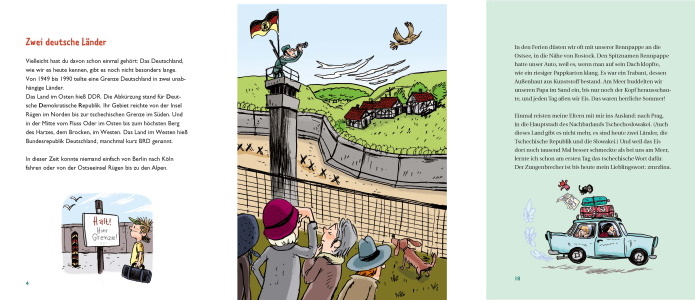
On 9th October, German cinemas saw the release of Fritzi: A Revolutionary Tale, a film based on Hanna Schott's and Gerda Raidt's children's novel of more or less the same name. On 3rd December, at the House of History, Bonn, the results were announced of this year's Gustav Heinemann Peace Prize, one of the most significant awards for writers of literature for children and young adults. The winner, Judith Burger, gained the accolade for "Gertrude Grenzenlos" (Gertrude Beyond Borders), one of countless works of fiction for young readers to have appeared in recent years - and which are all the more prolific now, 30 years after the fall of the Berlin Wall.
All these books are very different in terms of content, but they are all artistically convincing and are geared to their own particular age-group. These are just a few highlights.
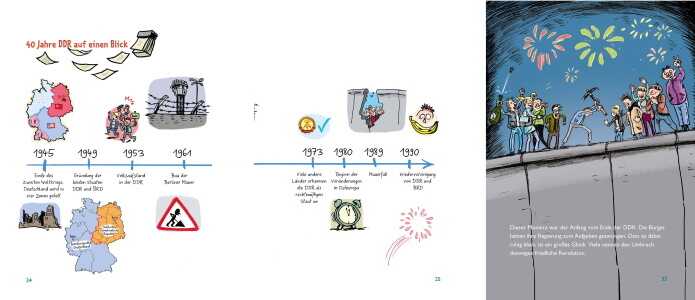
Picture Books
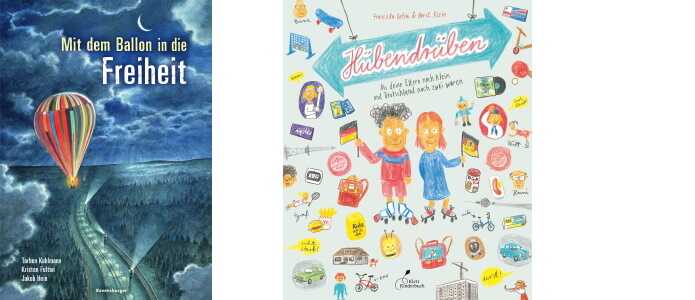
"Hübendrüben. Als deine Eltern noch klein und Deutschland noch zwei waren" (2018; Over Here and Over There: When your parents were children and there were still two Germanies) is a genuinely joint creation by Horst Klein, an illustrator who grew up in the West, and Franziska Gehm, an author who grew up in the East. This non-fiction picture book charms its audience with its text and pictures alike, not least as there is such a close graphic link between them. On the left-hand page we see the reality of life as it was in the Federal Republic, while the right-hand page depicts life in the GDR in the early 1980s.
Cousins Max and Maja have completely different experiences of family, school, free time and holidays. "My children always found it fascinating that I grew up in a country that no longer exists," says Gehm, who has lived in Munich for many years and has pursued a successful career as a children's author. "So I always wanted to write something that would tell them about my homeland."
Non-fiction
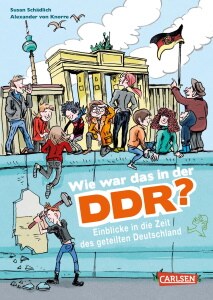
Alexander von Knorre and Susan Schädlich introduce primary-aged children to the history of Germany in a similarly vivid manner as they set about searching for clues. "Wie war es in der DDR? Einblicke in die Zeit des geteilten Deutschlands" (2019) ("What was it like in the GDR? Let's look at a divided Germany") is the follow-up to "Wenn Menschen flüchten" (2016; When People Flee) and "Woran Menschen glauben" (2017; What People Believe In). Like its predecessors, it demonstrates clearly and in a handy format the way in which everything was so very different before the fall of the Berlin Wall. And so we learn, for instance, all about 'Timurdienst' (which involved young children volunteering for social work, as good young Communists), 'Leckermäulchenquark' (a 1970s East German confection involving quark, vanilla essence, sugar, gelatine and whipped cream); and Rennpappe ("racing cardboard" - a mocking name given to the infamous Trabants).
As a child, Schädlich experienced the final years of the GDR, the fall of the Wall and the immediate aftermath of this historic event. "It sometimes seems more or less impossible to combine the two perspectives. Anyone who lived in the West has no experience of living in the East, and anyone who lived in the East had at most only glimpses of life in the West. And yet so many people are desperate to interpret the past," he says.
Children's Books
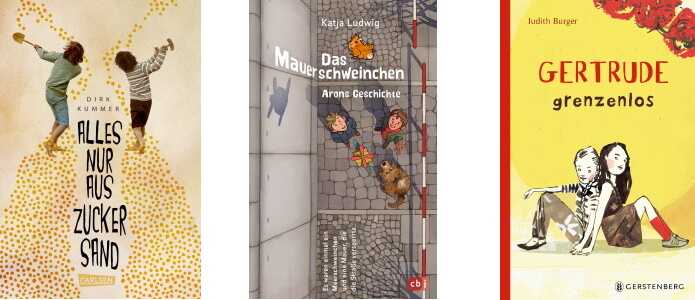
In "Das Mauerschweinchen - Noras Geschichte/Arons Geschichte" (2019; The Guinea Pig and the Wall) the author, Katja Ludwig, likewise transports her child readers into the world of a divided Berlin. This 'turnaround' or 'flip' book, with its dual cover and palindrome title (i.e. the two children's first names) tells the story of a flying guinea pig from the perspective of two children. Both live in Wolliner Straße - one in West Berlin and one in East Berlin. "As a child, I was completely fascinated by the idea that two totally different worlds could exist more or less cheek by jowl with one another - separated just by a few metres of wall. And to make it easier for modern children to understand, I had to keep them separate," explains Ludwig.
Judith Burger has come up with a different plot for her debut novel. In "Gertrude Grenzenlos" (2018; Gertrude Beyond Borders), she recounts in depth the story of the schoolgirl Gertrude, who joins Ina's class and wears Western clothes - but who is also an outsider because her parents have applied to emigrate. Despite this, the two girls are drawn to one another and become friends despite all the odds being stacked against them. "I just want two different girls from two very different families to be able to be friends without anyone objecting. It surely must be possible!" Ina declares feistily.
Burger thinks very carefully when asked to what extent her book promotes peace. "Well, reading can change the way people think and speak and, perhaps, might go on to have an effect on the way they act. Trying to get inside other people's heads makes your own head spin. For this reason, I always like writing in the first person," says the worthy winner of the Gustav Heinemann Peace Prize.
All the books mentioned above will educate and entertain readers of a variety of ages and in very different ways - and will, no doubt, make their heads spin in just the way that Judith Burger means.
Antje Ehmann is a freelance journalist and reviewer of children's and young adult fiction. She also judges literary prizes.
Translated by Helena Kirkby